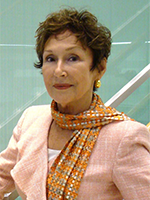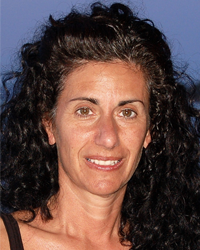As the first people in the United States have been vaccinated for COVID-19, we’ve all experienced a new sense of hope that perhaps there is an end in sight. However, excitement about this milestone has been tempered by the continued prevalence of the virus nationwide and the disruption and devastation it has wrought. Far too many households in the United States—more than 300,000—will have an empty seat at their holiday table this year. And there is a high likelihood that seat would have belonged to an older adult, as that demographic is at higher risk of severe illness and death from COVID-19.
The first wave of vaccines is rightly being deployed to healthcare workers and residents and staffs of long-term-care facilities. On Dec. 20, the CDC recommended that adults ages 75 and older be prioritized next. This is good news for America’s older adults, who represent 8 percent of the population, 25 percent of hospitalizations and 80 percent of COVID-related deaths in the United States. To reduce hospitalizations and deaths, we must not only prioritize the older population, but also provide timely and accurate information to ensure that older adults know when and where the vaccine is available; understand that it will be offered at no cost; and are confident in vaccine safety.
Tivity Health recently surveyed older adults about vaccine adoption and distribution. The good news from the SilverSneakers Pulse survey is that 85 percent said they would be willing to get the vaccine. However, almost half of that 85 percent have a wait-and-see attitude. Approximately 47 percent said they plan to take a vaccine within one month of its availability, and another 27 percent expect to get vaccinated within six months. Fifteen percent said they would not get the vaccine at all.
Barriers to vaccine adoption range from a mistaken assumption by many older adults that they will have to pay for inoculations, to concerns about side effects. Specifically, six in 10 older adults surveyed believe healthcare providers will charge them for vaccinations despite new federal rules stipulating that vaccines will be free to Medicare beneficiaries, including those ages 65 and older. And, of the 15 percent who say they will not get the vaccine, 75 percent expressed concern about potential side effects.
‘A comprehensive public awareness campaign can help dispel cost myths.’
A key component of ensuring availability and adoption by older adults will be offering the vaccine through trusted distribution channels. In our survey, older adults indicated they were most comfortable getting the vaccine from a primary care provider, pharmacy or clinic. Federal health officials and public and private sector decision makers must double-down on working with existing healthcare delivery partners and trusted community-based groups (including faith-based organizations), to ensure the highest-possible vaccination rates among older Americans.
Tivity Health’s survey confirms that battling misinformation will remain one of the biggest challenges in the ongoing war against COVID—along with confronting the most daunting logistical challenges in the history of modern medicine. With this in mind, successful rollout of the vaccine will require short-term coordination in at least three critical areas:
- Raising public awareness of costs. Federal, state and local agencies must work with healthcare providers and trusted community-based groups, including faith-based organizations, to disseminate accurate information about vaccination costs. Even for older adults planning to receive a vaccine, 36 percent of those surveyed say they are less likely to do so if it means paying out of pocket. A comprehensive public awareness campaign can help dispel cost myths.
- Ensuring broad vaccine distribution. A vast majority of older adults planning to take a COVID vaccine—84 percent of those surveyed—prefer to be inoculated by their primary care providers. Yet only 39 percent of older adults believe they will have quick and easy access to vaccines. Public- and private-sector decision makers must double-down on working with existing healthcare delivery partners to ensure the highest-possible vaccination rates among older Americans. Public health authorities also must be ready to address social determinants, such as lack of transportation, that may hinder older adults’ ability to get the vaccine.
- Committing to clinical transparency. Government agencies, research institutions, healthcare providers and others involved in vaccine mobilization and monitoring must be transparent in the work ahead. Older adults reported that the Centers for Disease Control and Prevention, the National Institutes of Health and the Food and Drug Administration would be trusted government sources of information about the vaccine. In the private sector, elders place the greatest trust in their primary care physician, health plan and pharmacist to provide accurate information about the vaccine. These trusted partners should be proactive in providing information to older adults to address their concerns. Maintaining patient trust in the process means leveling with Americans if clinical problems arise.
Vaccine development represents groundbreaking innovation. Now, the entire healthcare industry must step up to participate in a smooth, trusted vaccine deployment that includes understanding the barriers to adoption for those who need the vaccine most.
Richard Ashworth, PharmD, is president and CEO of Tivity Health, a public company dedicated to improving health outcomes for older Americans through fitness, social engagement and nutrition solutions.









